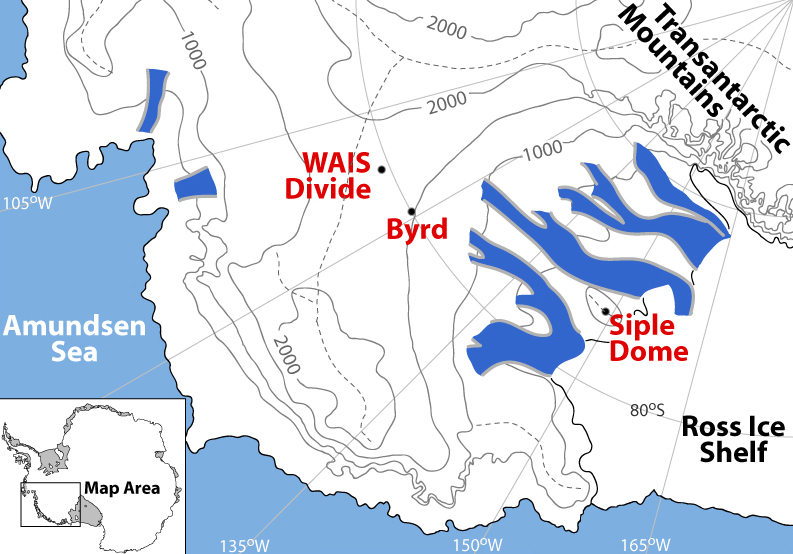
The West Antarctic Ice Sheet (WAIS) Divide is a deep ice core drilling project run by the United States Antarctic Program (USAP) and funded by the National Science Foundation (NSF). The general purpose of the WAIS Divide project is to collect a deep ice core from the flow divide in central West Antarctica that can be used for scientific analysis and research. Specifically, scientists are looking to create the largest and most detailed record of greenhouse gases possible for the last 100,000 years, and also plan to look at the role climate change could have had on these amounts.
History
The WAIS Divide project began during the 2005/2006 field season when the first team of scientists established the seasonal field camp and began construction on the ice core handling and processing facility. During this first season, they also dug a few shallow ice cores to test out the site. Over the 2006/2007 season, work continued on the arch handing and processing facility, as well as set up for the eventual Deep Ice Sheet Coring (DISC) drill. Currently, the WAIS Divide project is in its 2007/2008 field season and work is being done to finish both the arch facility and the DISC Drill. Upon completion, scientists plan on beginning the deep drilling that is central to this project. Projected plans for future field seasons can be found at the following website: http://www.waisdivide.unh.edu/about/schedule.html
Why the WAIS Divide?
In order to the get the necessary types of ice core samples for successful research, scientists sought out an area of the Antarctic Continent that would be the most beneficial. The WAIS Divide was chosen specifically due to some of the characteristics that make the site ideal for the project. Scientists chose the site because of the relative smoothness of the bed topography, the fact that the internal layers of ice are flat and undisturbed, and that the annual layers, each about 1 cm thick, will be detectable to at least 40,000 years within the ice sheet. Also significant is the fact that at the WAIS Divide, there is minimal horizontal ice flow, which guarantees more accurate data due to the ability to pin-point the specific atmospheric conditions in the same location as the ice sheet. One last important fact about the WAIS Divide location is the significance that the gas-age to ice-age difference is about 200 years for the Holocene epoch, and about 300 to 500 years for the last glacial period.
Research
The research being done at the WAIS Divide involves climate, ice sheet history, and cryobiology. With the undisturbed and ideal nature of ice at the WAIS Divide, scientists are planning to come up with some of the best and most detailed research in greenhouse gases, hemispherical climate changes and how these interrelate. These results will in turn be used to take a broader look at global warming, one of the main issues that faces mankind. While significant ice core sampling and detailed related research has been done in Greenland, the WAIS Divide project marks the first Southern Hemisphere and Antarctic venture of this kind.
Focus: Climate
The main purpose and project of the WAIS Divide is to develop the most accurate and detailed record of greenhouse gases for the last 100,000 years. Another area where the WAIS Divide project is expected to excel (more so than the Greenland projects) is in the development of an excellent CO2 record, since the Antarctic ice has less dust than the Greenland ice. The ability to compare research and environmental conditions between the Northern and Southern Hemispheres and the study of greenhouse gases relative to each will allow for a more detailed analysis of global warming.
In addition to studying climate and related changes, the WAIS Divide project will be able to measure many other gases (greenhouse and non-greenhouse) and their isotopes with unprecedented precision and resolution.

Focus: Ice Sheet and Biology
In addition to climate research, scientists plan on looking at the ice sheet and seeing how it influences the environment around it: i.e. seeing how the ice sheet affects changes in sea level. Scientists also want to develop an ice sheet history/timeline that can give an idea of when it was formed and changes that the ice sheet has undergone. Along with this, cryobiologists plan on looking for and observing both signs of past life and current (if any) biological life that exists within the ice sheet.
From http://en.wikipedia.org/
No comments:
Post a Comment